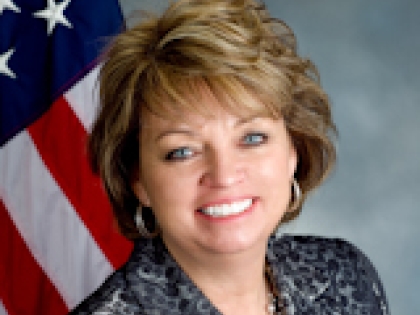
Halting Human Trafficking in New York State
Patty Ritchie
January 16, 2015
Senator Ritchie’s Weekly Column
When it comes to crimes, there are few more heinous than human trafficking; a modern-day form of slavery where men, women and children are illegally traded or used against their will for exploitation or commercial gain. The number of people affected by human trafficking is staggering, as it’s estimated that more than 1,000 individuals in New York State are victims of the crime each year. In addition, it’s estimated that through this $32 billion dollar per year industry, more than 18,000 people are brought to the United States annually for the purposes of labor and sex trafficking.
Recently, Governor Cuomo declared the month of January Human Trafficking Awareness Month in New York State and also announced new efforts to stop human trafficking and assist victims as they attempt to reintegrate into their communities. These efforts include placing posters that list trafficking red flags in service stations and rest stops throughout the state, as well as in county social service district offices. In addition, the poster lists a toll-free hotline, 1-888-373-7888, that provides free and confidential help to individuals.
I’m doing my part to fight back against human trafficking too. Just recently, I voted in support of the Trafficking Victims Protection and Justice Act. This important measure would prevent the exploitation of children and adults who are victims of human trafficking and would also toughen penalties against those who buy and sell women, men and children.
Human trafficking is known as a “hidden crime,” because victims often times don’t seek help due to language barriers, fear of the traffickers or fear of law enforcement. It’s a crime that many don’t notice, but is a reality—even in our own backyard. In our region, we narrowly averted a tragedy this past summer, when two young girls could have become victims of human trafficking. According to experts, signs that a person may be a victim of human trafficking include the following:
· Poor physical health;
· Signs of physical injuries or abuse;
· Avoiding eye contact or social interaction with others—especially law enforcement;
· A lack of official identification documents;
· Appearing destitute and lacking personal possessions; and
· An individual that is not permitted to be in public alone or speak for themselves.
These are just some of the red flags that indicate a person might be a victim of human trafficking. If you’d like to join me in the fight against this crime, you can learn more about its warning signs and how to help survivors on the New York State Office of Children and Family Services’ website,http://ocfs.ny.gov/main/humantraffic/.
Share this Article or Press Release
Newsroom
Go to Newsroom
Ritchie Releases 2021 Farmers Market Guide
June 30, 2021


